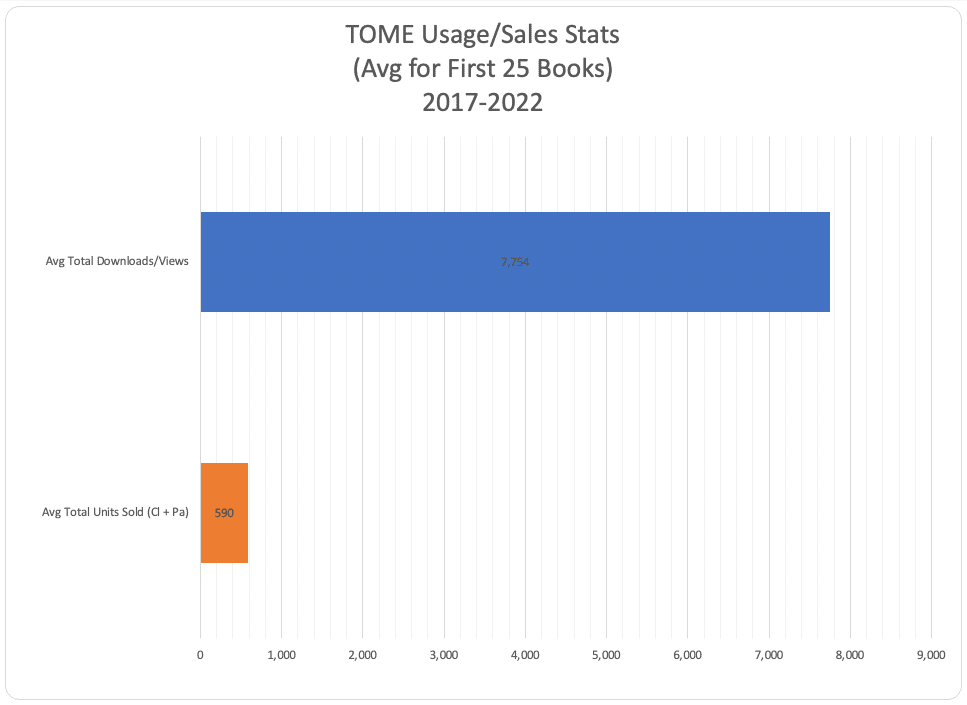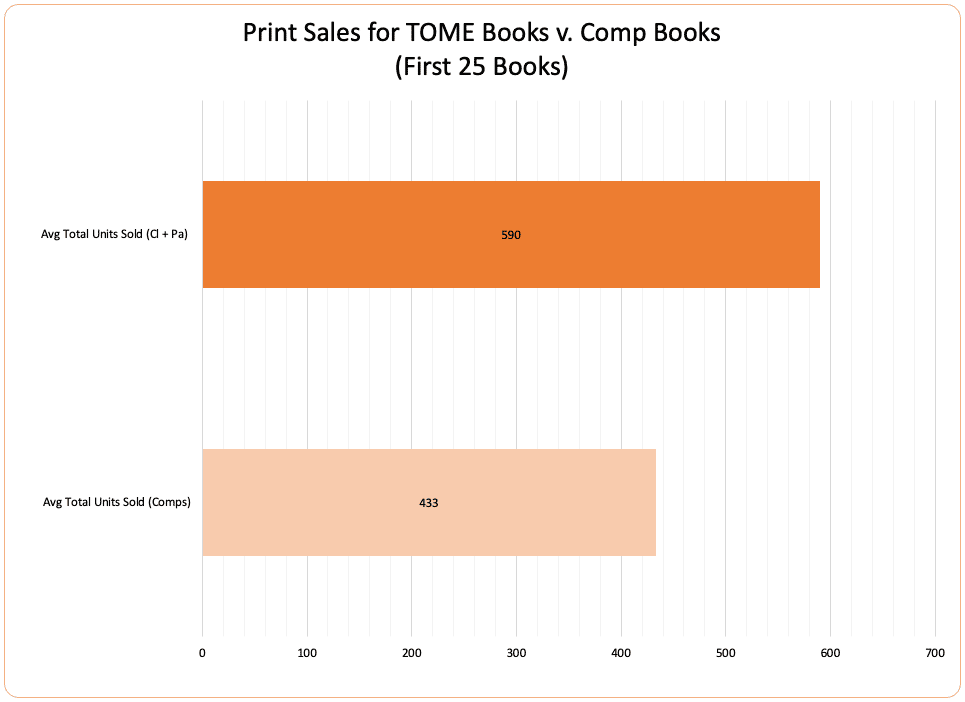Subscribe to our newsletter
TOME sheds light on sustainable open access book publishing

A five-year open access publishing pilot has come to an end, offering key insights into a future of sustainable open access publishing for monographs.
In December of 2022, Emory University in Atlanta hosted the fifth and final stakeholders meeting for TOME (Toward an Open Monograph Ecosystem).
TOME launched in 2017 as a five-year pilot project of the Association of American Universities (AAU), Association of Research Libraries (ARL), and Association of University Presses (AUPresses). The goal of the pilot was to explore a new model for sustainable monograph publishing, one in which participating universities commit to providing baseline grants of $15,000 to support the publication of monographs by their faculty, while participating university presses commit to producing digital open access editions of TOME volumes, openly licensing them under Creative Commons licenses, and depositing the files in selected open repositories.
The December meeting gave stakeholders (publishers, librarians, authors, and representatives from a number of societies and foundations) the opportunity to gather—both virtually and in person—and assess the outcomes of the initiative while also deliberating on next steps. In this post I briefly discuss one discrete piece of the assessment: What did we learn from the pilot about eBook usage and the impact of the OA edition on print sales.
Over the course of the pilot, more than 130 scholarly monographs have been published in OA editions with funding from the 20 participating TOME institutions. Given the long lead time associated with monograph publishing, most of the books (over 70%) were released in the final two years of the pilot, which means that any usage data collected by the publishers would be preliminary at best, so the initial analysis focused on the first 25 books, which were published between May 2018 and September 2019. Prior to the December meeting, the publishers of these 25 books were asked to collect usage data from each of the platforms hosting the OA editions. In addition, they provided print sales figures, both for the TOME editions and for comparable titles on their list. The resulting data were compiled into a spreadsheet for analysis.
Not surprisingly, the main challenge to analysis of these data was the apples-to-apples problem. Some repositories and platforms collect downloads while others track views only. Some base their stats on single chapters; others on the entire book. Meanwhile, publishers do not all place their OA editions on the same platforms. As a result, the spreadsheet ended up looking a bit like a checkerboard with pieces on some squares but not others. For instance, here’s how a small portion of the spreadsheet looked when the data were filled in:

“TOME’s usage stats stand out even more when seen alongside the sales figures for the print editions of the same titles.”
Peter Potter
Still, when all the data were collected, one thing was clear: the OA editions have been heavily accessed online. By July 2022, the first 25 TOME books tallied nearly 195,000 downloads and views. The average per book was 7,754.1
These findings are in line with those of other OA book initiatives. In November 2022 MIT Press reported that the 50 books published OA in 2022 through its Direct to Open program were downloaded over 176,000 times.2 This works out to roughly 3,520 per book. Likewise, the University of Michigan Press reported in January 2023 that the 40 Fund to Mission books released OA in 2022 were downloaded over 149,000 times up to the end of December, reaching an average of 3,826 per book.3 While the per book numbers for both D2O and Michigan are lower than that of TOME, the TOME books accumulated their stats over a longer period of time.
TOME’s usage stats stand out even more when seen alongside the sales figures for the print editions of the same titles. As can be seen in this bar chart, the average number of downloads/views per book (7,754) is significantly higher than the average unit sales per book (590).

We also considered one of the biggest questions that publishers continue to ask about OA books: How does the OA edition affect sales of the print edition? With this question in mind, publishers provided not just the sales figures for TOME books but sales figures for comparable titles on their list. (Each publisher was left to decide what it deemed a “comparable” book.) As this chart shows, the print editions of TOME books actually outsold their comps.

“The print editions of TOME books actually outsold their comps.”
Peter Potter
These findings should be taken with a grain of salt. As several publishers pointed out, identifying comps for any single title is mostly guesswork. Furthermore, the sample size (25) is too small to warrant drawing any firm conclusions. For instance, most of the 25 TOME titles had print sales between 300 and 500 copies. Only in four cases did sales exceed 1,000 copies, and if these four titles are excluded from the sample the average drops to a number more consistent with the comps. Understandably, therefore, most presses were reluctant just yet to draw any conclusions about OA’s impact on sales.4
Of course, we know that the impact of scholarly books goes well beyond downloads, views, and sales figures. A future post will look at the Altmetric data for TOME books to see what they tell us about alternative measures of impact. Meanwhile, a final report on TOME, including an in-depth examination of attitudes and motivations of the stakeholder groups, is due to be released in the coming weeks.
1 The median was 5,243, with a minimum of 800 and a maximum of 27,470.
2 https://mitpress.mit.edu/mit-press-direct-to-open-books-downloaded-more-than-176312-in-ten-months/
3 https://ebc.press.umich.edu/stories/2023-02-01-so-how-did-they-do-in-2022/. These figures filter out a digital project with very high usage, which was considered an outlier.
4 A larger study of OA impact on sales, sponsored by the NEH, is forthcoming from AUPresses. https://aupresses.org/news/neh-grant-to-study-open-access-impact/

About the Author
Peter Potter, Publishing Director | Virginia Tech
Peter joined Virginia Tech’s University Libraries in 2016 after many years in university press publishing. He guides the library’s long-term planning in the area of publishing services, consults with faculty, staff, and students on their publishing needs, and advises prospective authors on all aspects of the scholarly publishing process. During most of the TOME pilot, he served as ARL Visiting Program Officer overseeing the initiative.
